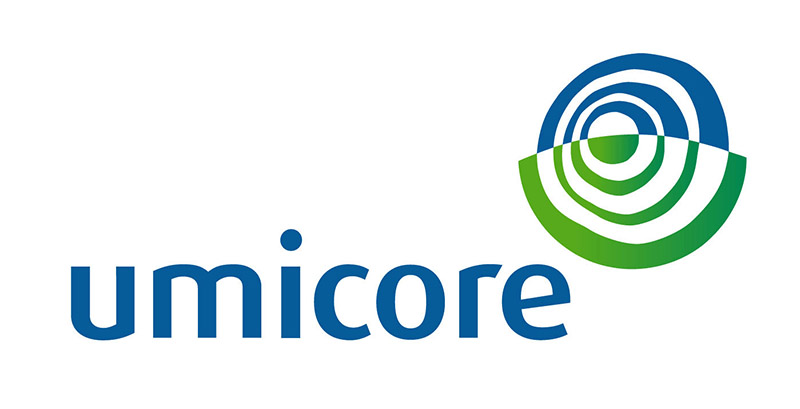NOT CURRENT YEAR

Umicore
About the company
Grade Summary
Umicore has a large production/use of hazardous chemicals and data tells us that it is producing 30 highly hazardous chemicals, which is an increase compared to last year. The company does not, however, produce/use any persistent chemicals – at least not according to the publicly available production data from the EU and the US. The relatively large production/use of very problematic chemicals is a big reason behind Umicore’s poor score in this category (2 points) and also in the ranking as a whole. In the other categories Umicore places itself very much in the middle. It does not really excel in any category, but it is not among the worst either. When it comes to circular economy the company is lacking a clear circular strategy with measurable targets.
Opportunities for improvement
- Umicore should reduce its hazardous portfolio, which currently consists of 30 banned, severely restricted or SIN-listed substances. Chemical pollution has a harmful impact on human health and the environment, and poses a growing threat. Two million people died due to exposure to hazardous chemicals in 2019, compared to 1.56 million in 2016, according to the World Health Organization (WHO). Hazardous chemicals are also key drivers of biodiversity loss, putting entire ecosystems in jeopardy. A good place to start the reduction would be the six PIC substances that Umicore still offers. PIC, short for Prior Informed Consent, is one of the key provisions of the Rotterdam Convention, allowing the export of – often domestically restricted – hazardous chemicals to poorer countries with weaker chemical legislation, as long as the receiving country signs a consent that it understands what it is accepting and has a plan for how to handle it.
- It is surprising that a company with a sustainable approach in the recycling sector fails to inform about its chemical management processes. Recycling metals and batteries involves handling highly hazardous chemicals. Umicore should make it a priority to communicate about how the company works to screen and minimize
- Umicore regards itself as a circular frontrunner, being in the recycling business and applying a closed loop. Still, we miss a clear circular strategy, with relevant KPIs and SMART targets, to be able to follow the progress of the company.
Category breakdown
Umicore produces/uses 30 highly hazardous substances – 27 SIN List chemicals, 6 PICs, and 2 HHPs – 11 of which are included on the EU’s REACH Candidate List. 3 of these highly hazardous substances are either banned or severely restricted, with set dates when production needs to cease (3 Authorisation List substances, and no POPs). The company produces no persistent chemicals.
Please note that there is no available data for the 44 percent of the company’s production that takes place outside of the EU and US. Lower EU/US production means higher uncertainty with regard to the total production of hazardous chemicals, which will have a negative impact on the company’s score in this category.
Umicore has a method in place to screen and assess the sustainability of its products, but does not include the intrinsic hazards of ingredients in the screening process. Neither does it exclude substances with toxic properties from its new products. Umicore does not actively market safer alternatives on its own website, neither on ChemSec Marketplace. The company has at least one true circular product, process or innovation. Umicore uses biobased resources without occupying extra land or competing with food production. It sources and treats recycled materials in a sustainable way, which is one of the key elements of a circular economy. Umicore is not actively reducing the hazardous waste it generates.
The Belgian company does not produce only sustainable products, and it does not have a timed phase-out strategy for hazardous substances that go beyond regulatory compliance. It does not share chemical safety information on its website, but it is following a credible code of conduct standard. Umicore responded to ChemSec’s attempts to communicate around its ChemScore ranking, but it does not share any information about what kind of chemicals it produces in regions with low regulatory demands for transparency (e.g. Asia). Umicore does not have a circular economy program in place, and it is lacking objective and measurable circular economy targets.
Umicore’s flagship facility in Antwerp has been a source of concern due to widespread contamination in the region, which has led to health problems for its residents. A report in 2020 showed high levels of led in the blood of children living close to the facility. A study released by Public Health France in 2018 also showed high body burden of arsenic and cadmium among the population around Umicore’s five former mining sites as compared to the general population. The last couple of years have also included several fires and explosions at the company’s facilities, of which one has resulted in the death of one person.
Download Controversies Umicore (PDF, 113 KB)How did we come to this score?
Do you want to know more about our methodology and how we rank the companies at ChemScore?

 Close
Close
 More
More



